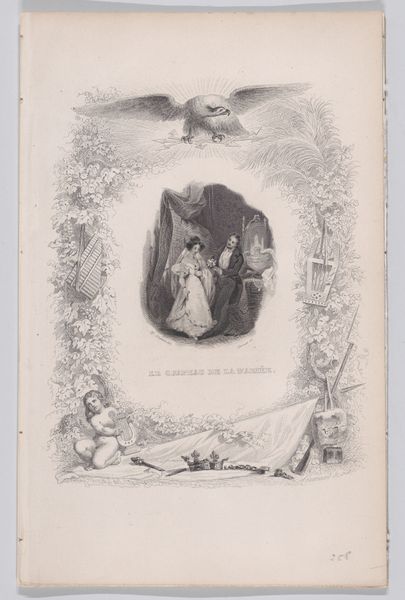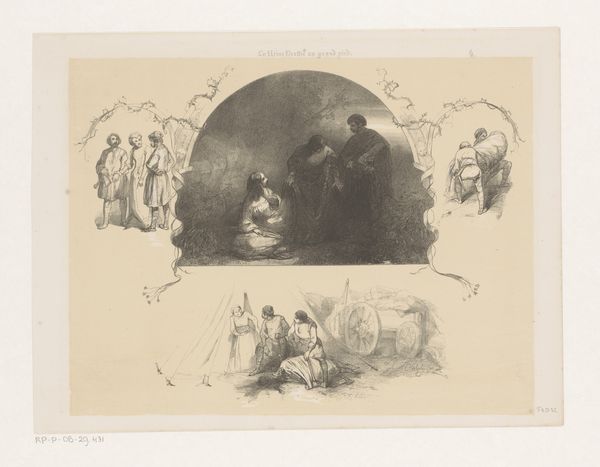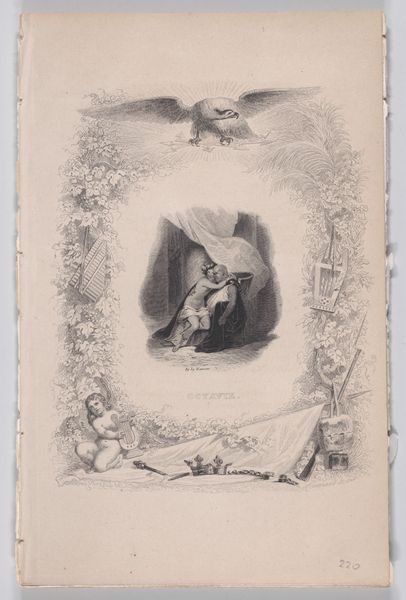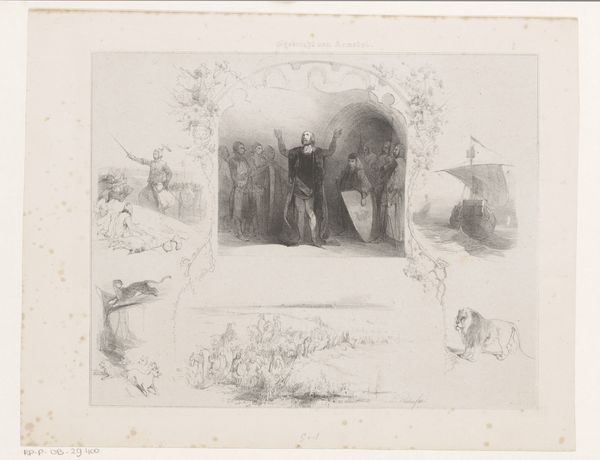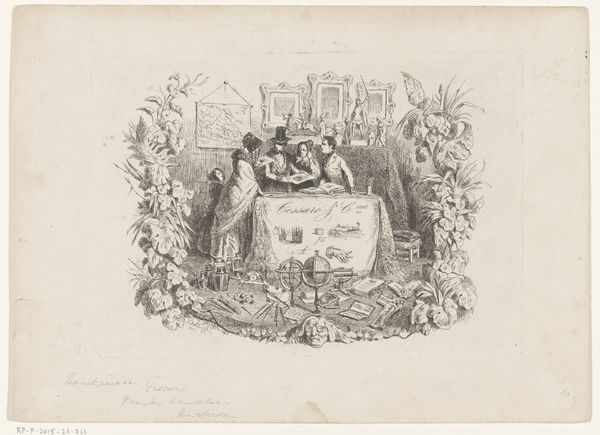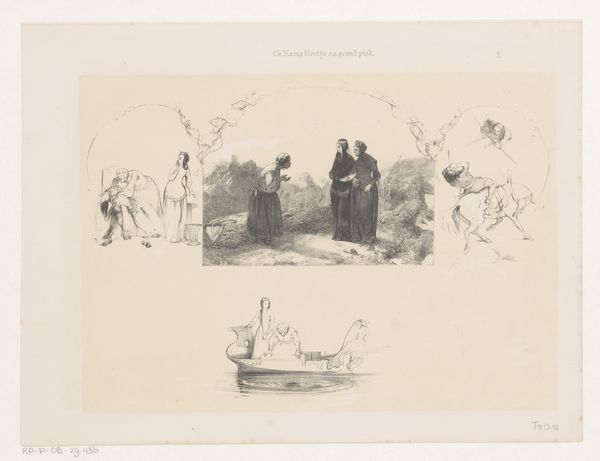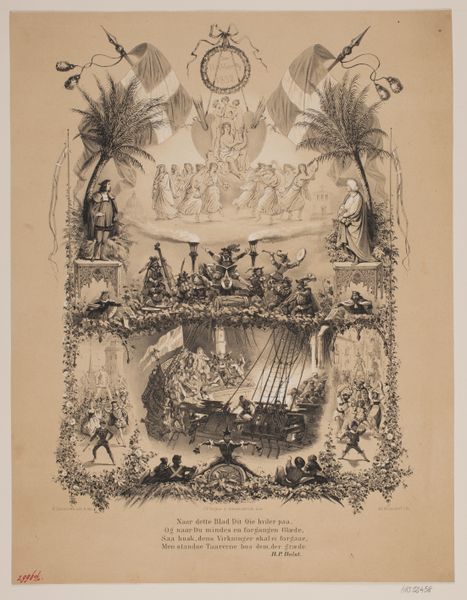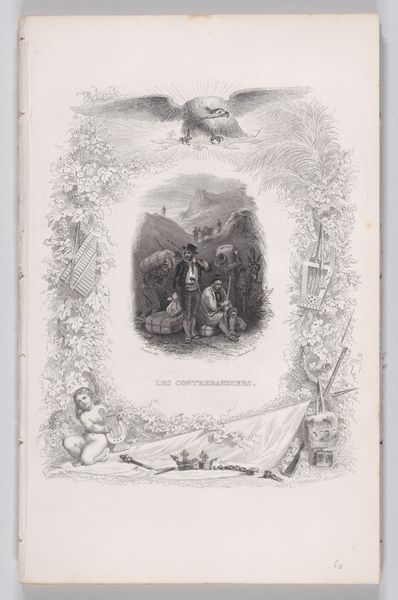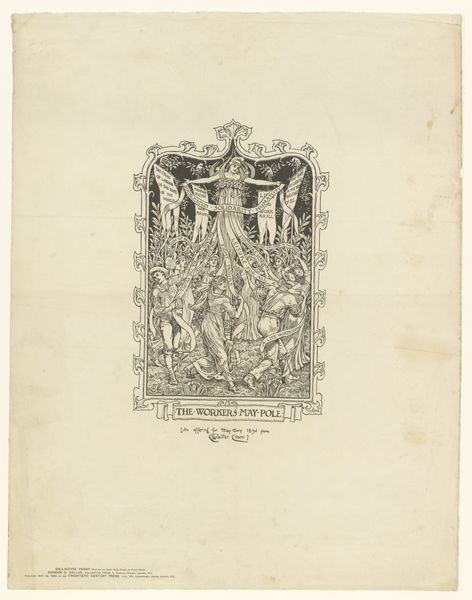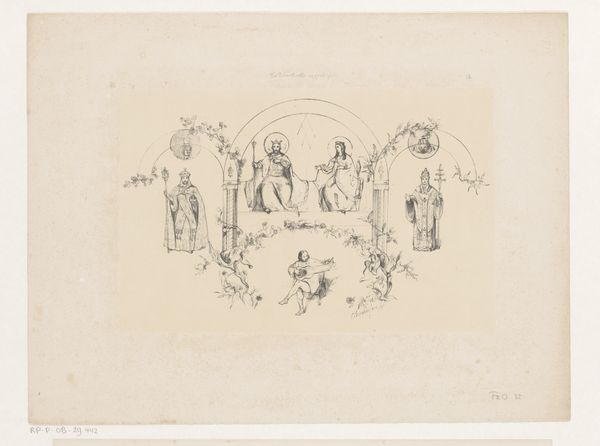
drawing, pencil
#
drawing
#
pencil sketch
#
romanticism
#
pencil
#
line
#
history-painting
Dimensions: height 262 mm, width 340 mm
Copyright: Rijks Museum: Open Domain
Curator: Looking at Charles Rochussen’s 1841 pencil drawing, “Doek met titel tegen gotische achtergrond," which translates to "Cloth with title against a Gothic background", I find it really intriguing, particularly given its current home here at the Rijksmuseum. Editor: It strikes me as rather ghostly; that drape has such delicate shading as if rendered from mist, and seems poised to slip away any moment. Curator: Absolutely. I see this drawing, through the lens of 19th-century Romanticism, engaging with ideas of history and nationhood. The Gothic elements would have certainly resonated with a rising nationalist sentiment eager to rediscover its past. The "Cloth with Title" acts almost as a symbolic declaration—revealing or perhaps obscuring— a founding narrative. Editor: I'm drawn to the meticulous execution. Rochussen clearly understood how to manipulate the properties of pencil, almost dissolving the material into tones. And then there is the creation of the titular cloth, draped just so, emphasizing its texture through carefully rendered lines and shadows, effectively grounding this ephemeral scene with real materials. It all appears very stage-managed for public consumption. Curator: I concur about the staging and the drawing style speaking directly to a re-enchantment with the past that served to establish a kind of legitimization of national identity, albeit often imagined and romanticized. So many cultural phenomena tie directly back to questions of power. Consider what historical narratives this "Güsrecht van Amstel" – the old Dutch phrase for "law of Amstel"- could possibly signal in its socio-political context. Editor: It feels important to discuss the implications of accessibility, particularly the relatively cheap, humble means utilized here to produce this piece. We are speaking of pencil on paper which renders historical drama at a relatively low cost and multiplies distribution through reproductive prints—which allowed such ideologies to filter through society across class divisions. Curator: Indeed, in that sense the work speaks to me of how carefully selected history and imagery can bolster specific concepts of societal cohesion and power structures—concepts that may very well have different resonance today as we examine notions of inclusion and identity. Editor: I am leaving this discussion curious about the choice of materials. Rochussen might suggest a reverence for what constitutes art; this subtle manipulation, this close consideration of craft to present "history". A potent, enduring gesture I'd say.
Comments
No comments
Be the first to comment and join the conversation on the ultimate creative platform.



